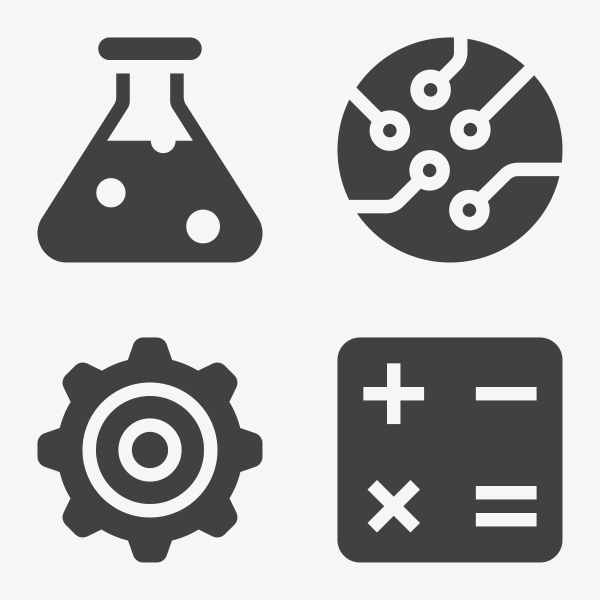To improve student achievement in math and science, educators must engage students in a deeper understanding of math and science concepts. The following Web sites provide content for reflection and tools offering thought-provoking approaches to math and science education that will be sure to fire up students'—and teachers'—imaginations.
The Beauty of Math
The Illuminations Web site of the National Council of Teachers of Mathematics (http://illuminations.nctm.org) is a good place to begin exploring the beauty of math. The site offers many interactive math tools that add a compelling visual and instructional element to math concepts and that teachers can use to create colorful, interactive lessons.
Also check out Cynthia Lanius's site on fractals, the “bright, weird, beautiful” shapes that base their existence on mathematical properties (http://math.rice.edu/~lanius/frac). Lanius's standards-based lessons for elementary and middle school students not only show students how to make fractals but also discuss the special properties and practical applications of fractal geometry.
Realistic Mathematics
Visit the Freudenthal Institute's Web site (www.fi.uu.nl/en/welcome.html) to learn about mathematician Hans Freudenthal and his concept of realistic mathematics education, a teaching practice that focuses on practical, real-world problems rather than on abstract math rules. The institute conducts research “aimed at developing a dynamic theory about learning and teaching mathematics” and promotes “curriculum development for innovation and improvement of mathematics education.”
The Web site's index of projects shows a number of partnerships between the institute and U.S. universities and schools. One project, Mathnet (www.fi.uu.nl/rekenweb/en), enables primary teachers to network with other educators and discuss their daily practice with experts from the institute.
It's a Nanoworld
When thinking about the future of science and technology, think small—one-billionth-of-a-meter small. That's the scale of nanotechnology, and researchers claim that it may lead to the creation of computers the size of a grain of salt or tiny organic devices that detect and cure diseases. Visit Nanoworld (www.mrsec.wisc.edu/edetc) to learn about nanotechnology from such videos as The Next Big Thing or from silent clips at the Nanoworld Cineplex. Lesson modules and program descriptions explain the new technology to K-16 students and teachers.
To find out how to engage students in real-world science research in other cutting-edge fields of applied science, go to TechXplore (www.techxplore.org), a site that pairs technology experts with teams of students to help young people explore technology. Together, the teams “propose solutions to real-world problems and address quality-of-life issues using technology” and compete with other teams from around the world. Two recent winners developed a system to battle bioterrorism and launched a small satellite.
NASA and the 5Es
Solid inquiry-based science teaching depends on using the “5Es” during instruction: engagement, exploration, explanation, elaboration, and evaluation. For a convenient analysis of teachers' and students' roles in each of those five areas, go to the 5Es table (http://lws-edu.gsfc.nasa.gov/library/5Es/5Es.htm), an offering from NASA's Living with a Star Education and Public Outreach Web pages.
You can find plenty of the 5Es in NASA's Kids Main Page (www.nasa.gov/audience/forkids), which offers teachers, students, and families insights into and activities on space and flight research. Features include a Wright brothers retrospective that offers a (virtual) chance to fly farther than the original 1903 flight, simulations that illustrate the principles of flight, and a video explaining how Mars rovers are tested.
ENC's Deep Well
For the best annotated science and math Web resources, bookmark the home page of the Eisenhower National Clearinghouse for Math and Science Education (www.enc.org) at Ohio State University. Take a look at its monthly Digital Dozen feature to find such select sites as Court TV's Forensics in the Classroom (www.courttv.com/forensics_curriculum) or Auroras: Paintings in the Sky (www.exploratorium.edu/learning_studio/auroras).
If You Like Bugs . . .
To enjoy the insect world up close while learning how to operate an electron microscope, schools can sign up to work with Bugscope (http://bugscope.beckman.uiuc.edu) at the University of Illinois at Urbana-Champaign. Classrooms mail in their specimen bugs and schedule a date to remotely operate the microscope online for the rest of the bug-viewing world to see. A rogues' gallery of spider fangs, housefly heads, and grasshopper claws, magnified hundreds of times, gives online proof that science is not for the faint of heart.



